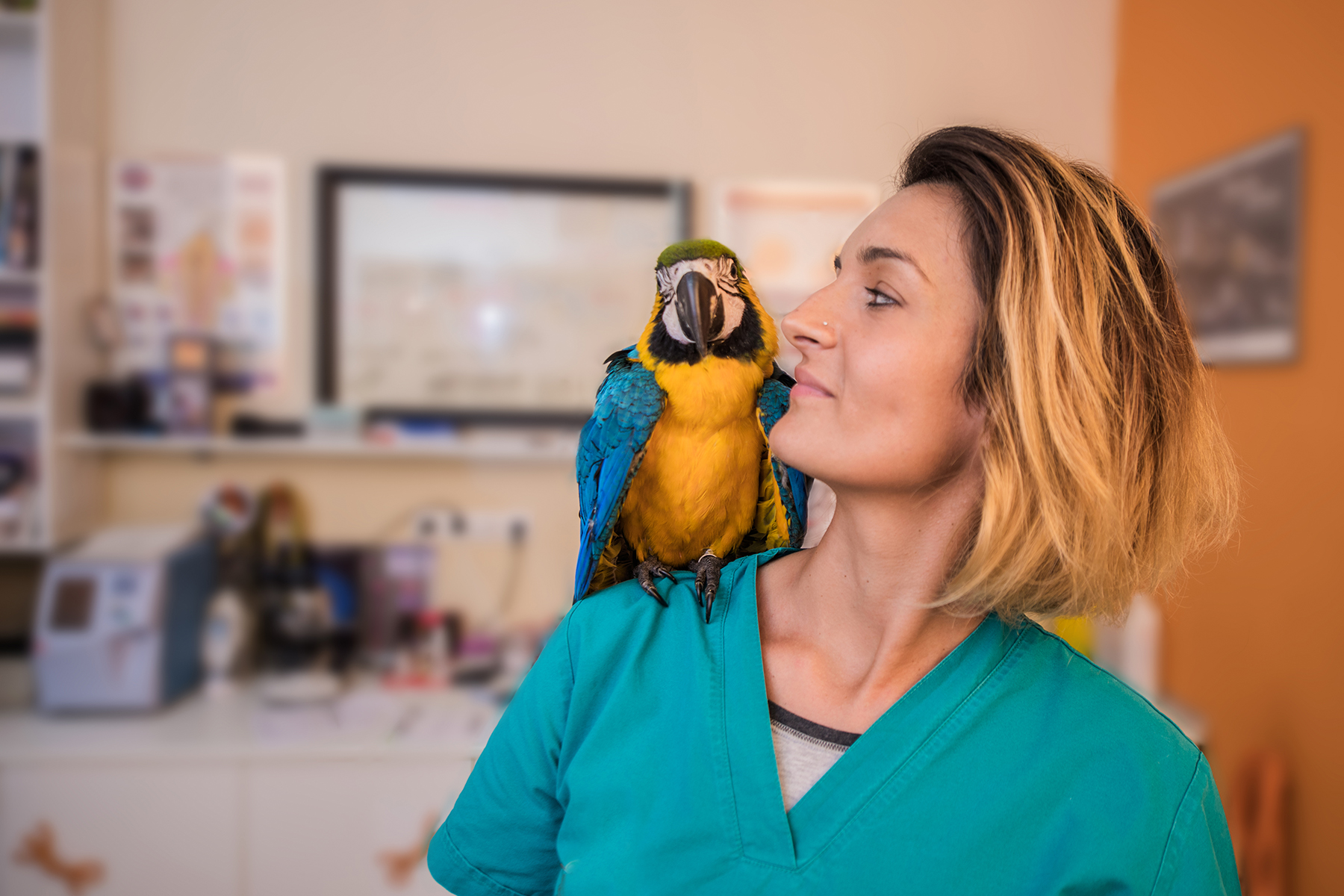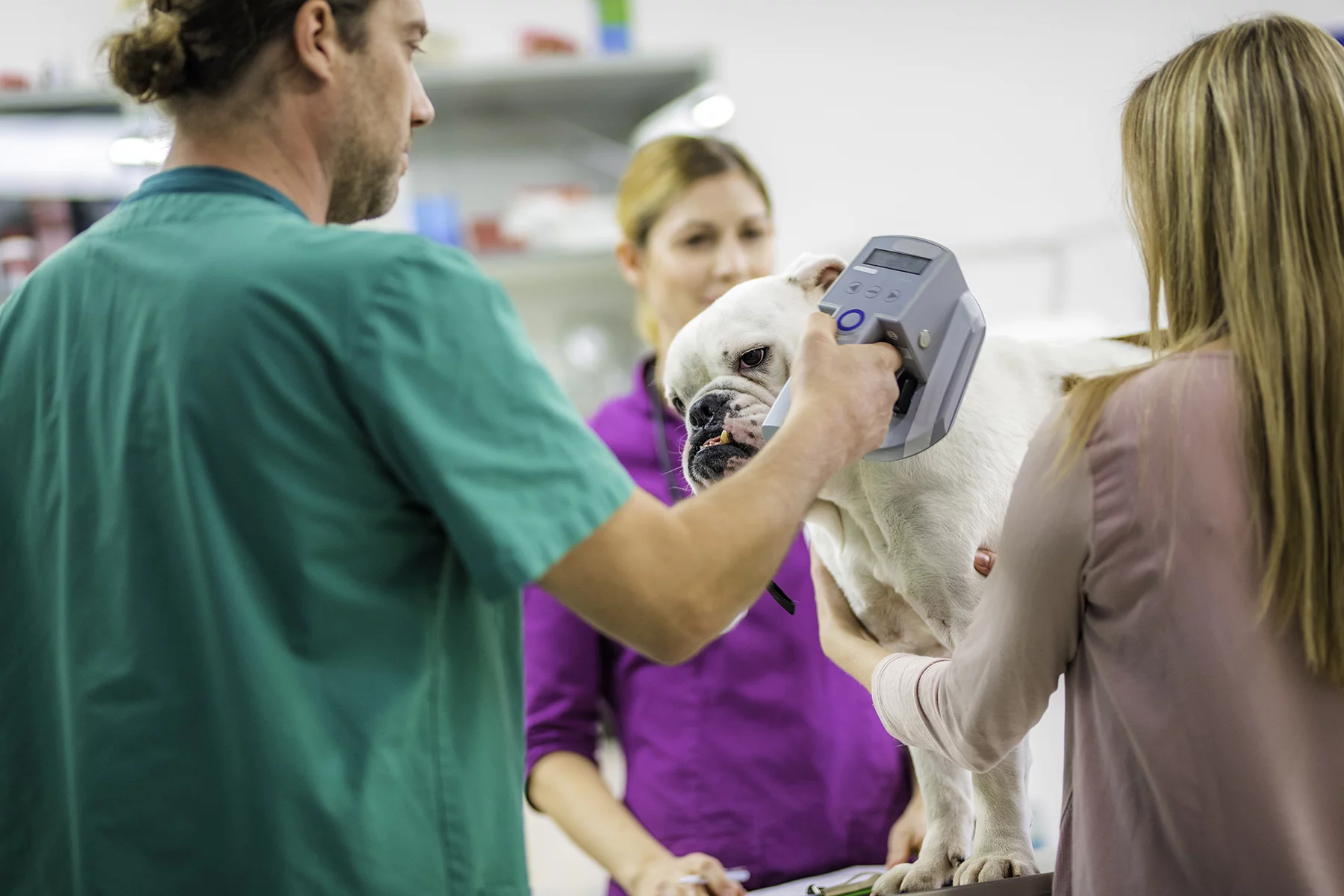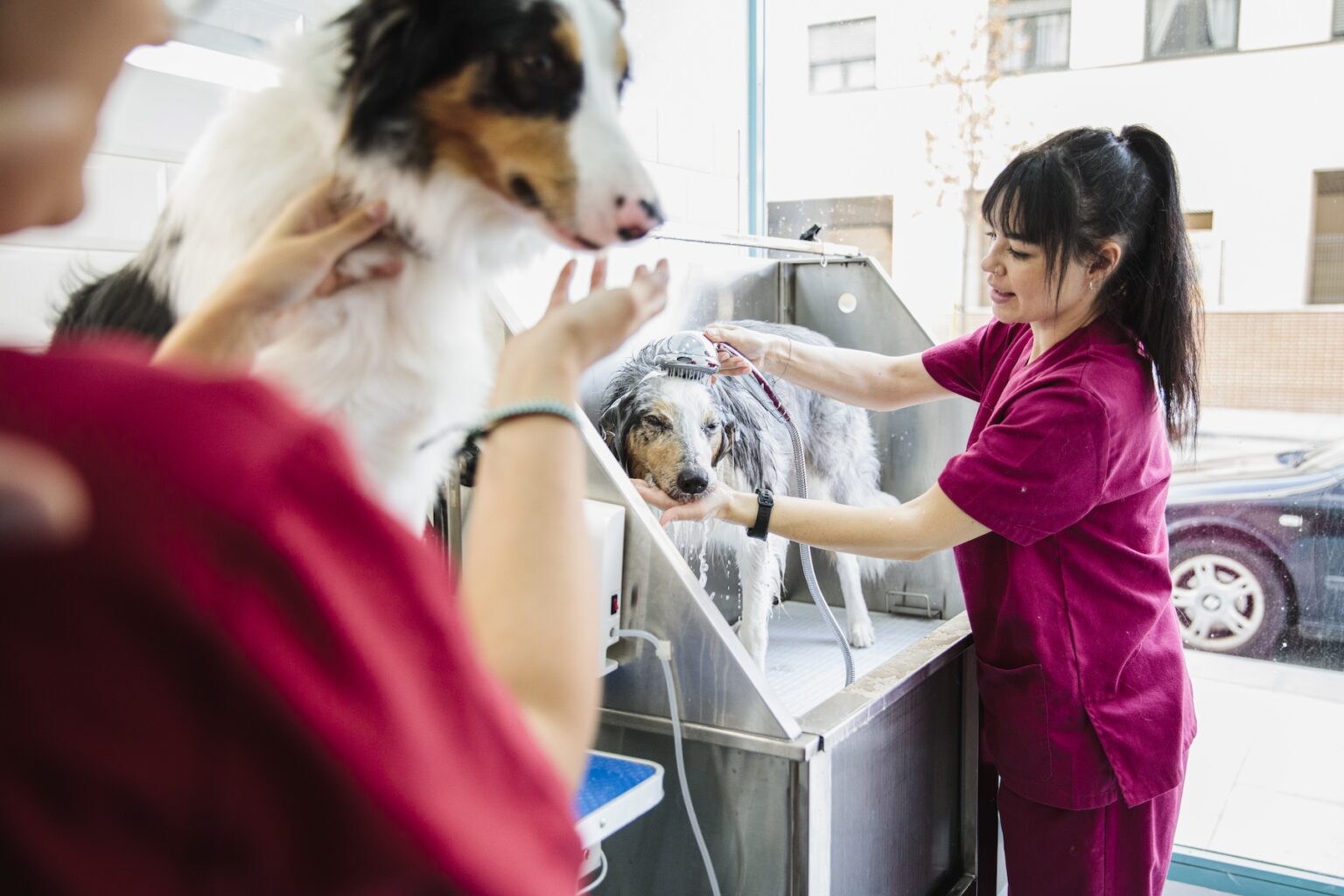Like many countries, Spain is a nation of pet lovers, which reflects in the cultural norms and regulations. Many families, including international households, keep cats, dogs, fish, birds, or other domesticated animals for companions. Still, there are many things to consider when becoming a pet owner or when relocating to the country with your pet.
Therefore, here’s what you should know about pets in Spain, including information on:
Sirelo
It’s no secret that moving abroad can be stressful. Sirelo’s team of removal advisors is here to help. They provide five free quotes from international shipping companies so you can find the best options at the best prices. Take the stress out of your move to Spain with Sirelo.
Pet culture in Spain
Pets are popular in Spain, although there are various rules and regulations concerning pet ownership. These rules often differ across the autonomous communities.

According to the Spanish Network for the Identification of Pets (Red Española de Indetificación de animales de compañia, REIAC), there are around 13 million registered pets in Spain. Figures from 2019 show that 26% of households own dogs and 11% own cats. However, the total number of pets in Spain, including smaller creatures not registered, is closer to 20 million, according to a national census carried out by the veterinary association, AMVAC (Asociación Madrileña de Veterinarios de Animales de Compañia) in 2017 (in Spanish). This works out at an average of over one pet per Spanish household.
According to the census, the most popular pets in Spain were:
- Birds (5.3 million)
- Dogs (5.2m)
- Fish (4m)
- Cats (2.3m)
There were also over two million other pets, including ferrets, rabbits, reptiles, and hamsters.
Spain has rules prohibiting certain animals as pets, although these vary across the communities. For example, the Catalogue of Invasive Alien Species lists creatures including bullfrogs, Galapagos turtles, Argentine parrots, raccoons, some breeds of hedgehog, and porcupines. Owning any of these as a pet can lead to a fine of up to €2 million.
Historically, Spain has lagged behind many other European countries in terms of animal welfare. It scores a C on the 2020 World Animal Protection Index, including a D on protecting domesticated animals. However, the government recently created a Directorate-General for Animal Protection and has set about improving standards.
Spain now ranks 8th on the 2022 Dog-Friendly Country Index.
Pet laws in Spain
Many pet laws in Spain vary across the independent states, so check locally to avoid getting a fine or worse. Additionally, new national animal welfare laws came into effect in 2022. Pets are now considered sentient beings and cannot be seized, abandoned, mistreated, or removed from the owner without good reason. New laws also cover shared ownership if couples divorce or separate.
There are plans for further changes later this year, including:
- Bans on putting animals down unless strictly necessary
- No animals are used in circuses
- Pet stores are no longer allowed to sell pets
- Harsher penalties for animal abuse
- Introducing a new national pet ID scheme to help monitor pet ownership

Of course, you must have suitable accommodation for pets as you cannot leave them on balconies or outside in exposed areas. Dogs must be kept on a lead in public places and are not allowed on most Spanish beaches.
The Horizontal Property Law in Spain (Ley de Propiedad Horizontal) protects those in apartment blocks and communal buildings from noise and disturbance, including by pets. You’ll need to check the local pet laws if you live in this type of building.
Dangerous animals
Furthermore, pets in Spain, such as dogs and cats, must be registered, microchipped, vaccinated against rabies, and have a health card. You must also have a special license for breeds of dogs considered dangerous, and place them on the dangerous animals’ register (Registro de Animales Potencialmente Peligrosos). They need to wear a leash and muzzle in public. This applies to dogs, such as:
- Pitbull terriers
- Staffordshire bull terriers
- Rottweilers
- Fila Brasileiros
- Akita-Inus
However, the proposed law changes include no longer categorizing any breed of dog as a dangerous animal.
Getting pets in Spain
Buying pets
Buying new pets has become more heavily regulated in Spain. New regulations will outlaw selling animals other than fish in Spanish pet stores. If you want to buy fish from a shop in Spain, you can search for stores on Europages or directory services, such as the Spanish Yellow Pages (in Spanish).

However, you can still buy pets in Spain from licensed breeders or secondhand on websites such as Milanuncios. If you decide to get an animal from a breeder, ensure they have a valid license. Like many other countries, Spain has a problem with unlicensed breeding and the illegal trading of animals. Again, laws vary across regions. For example, it is illegal for private parties not registered as animal centers to trade with pets in Catalonia.
Getting a pet from a shelter or rescue center
With increased regulations on the pet trade, many animal lovers opt for the more responsible option of adopting a pet from an animal charity, shelter, or rescue center. Some places provide animals for free to vetted owners; others charge fees. These centers include:
- Huellitas Perdidas: a lost pets marketplace that offers adoption opportunities
- P.E.P.A: an animal rescue charity dealing mainly with dogs and cats (three locations nationwide)
- Pets in Spain: provides national animal rescue and rehoming
- Adopt a Pet: a search tool for pet adoption
- Animal Rescue Spain: opportunities for pet adoption and fostering
You can also find details of other animal centers via your local municipality.

If you want to acquire a pet from these centers, you must prove your suitability. Typically, you will have to provide a form of identification (e.g., passport or residence card) and pet ownership details (if applicable). The center will usually interview you and inspect your home to ensure a healthy and safe environment for animals.
Fostering a pet
Many animal welfare charities and organizations also offer fostering opportunities where you can look after an animal short-term. This can be a great way of deciding whether you can commit to adopting a pet. Again, the organization will probably want to interview you and inspect your home. If you adopt a pet in Spain, the host organization usually covers costs, such as vet bills. Some organizations like P.E.P.A. will also pay food bills, if necessary.
Bringing or importing pets to Spain
Pet immigration rules and restrictions
You can bring up to five pets to Spain. Dogs, cats, and ferrets must be fitted with an ISO microchip and vaccinated against rabies at least 21 days before travel. Additionally, pets must be 15 weeks or older when they travel.
If you are from the European Union (EU) or a European Free Trade Association (EFTA) country, your pet must have an EU passport. Pets from outside the EU/EFTA must have an animal health certificate (translated into Spanish) signed by an official veterinarian.
If your pet enters from a country with a high risk of rabies, it must have a titer blood test, one month after vaccination and three months before departure. This will assess its immune response to the virus.

Birds need an INTRA-2 vet certificate (in Spanish) if coming from the EU/EFTA.
All other pets, including reptiles or other creatures, must have an INTRA vet certificate if coming from EU/EFTA countries.
More information on pets other than dogs, cats, and ferrets is available on the Ministry of Agriculture website.
Where possible, you should travel with your pet to Spain. Otherwise, it should arrive within five days of your entry.
Pets from outside the EU/EFTA region
From outside this region, you will need an animal health certificate signed by a vet confirming that either:
- The animal has undergone quarantine for 30 days before traveling to Spain
- It will quarantine for 30 days upon arrival in Spain
- It has been vaccinated against avian flu at least 60 days before traveling
- The bird was tested for avian flu and isolated for 14 days
Pets outside the EU/EFTA need to arrive at a designated passenger entry point (PEV) and be declared to the Civil Guard’s (Cuerpo de la Guardia Civil) tax department.
Traveling with pets
You can travel to Spain with pets by plane, train, or car. If you fly with pets, the airline will normally insist that you use a ventilated container that should be labeled carefully. You’ll also need to provide adequate food and water for the journey.

The International Air Transport Association (IATA) sets the rules regarding the approved types of pet travel containers and most global airlines follow these regulations. Read the IATA requirements before you travel with your pet abroad.
On shorter flights (less than ten hours), many airlines will allow passengers to take their small cats or dogs in the cabin. Generally, the airline will only allow one pet per passenger and a maximum of two pets per cabin. The container for the pet must fit under the seat in front of you, have a waterproof bottom, and adequate ventilation.
The Sherpa, Bergan, and SturdiBag pet carriers are all airline compliant as long as your pet fits comfortably.
There are different regional rules for traveling with pets on Spanish public transport, so you will need to check before you use trains or buses.
Pet relocation companies
To make things simpler, you can use a pet relocation company that will deal with all the necessary paperwork and ensure the safe transportation of your pets. This is a good option if you’re unable to travel with your pets.
Pet arrivals in the country
Fortunately, your pet won’t have to quarantine if you follow the rules and regulations. If a pet arrives without the necessary vaccinations, medical checks, and health certificates, the border authorities may quarantine it and even return it to the departure port. In extreme cases, they may euthanize the animal.
If your birds were not vaccinated or tested against avian flu nor quarantined for 30 days before arrival, they must quarantine for a month in Spain.
Registering pets in Spain
All dogs and cats should be microchipped and registered in Spain at a local vet surgery. Processes and costs vary across the autonomous regions. Many animal charities and centers also offer microchipping services. Each state has its own register, but these are coordinated nationally by the Spanish Company Animal Identification Network (Red Española de Identificación de Animales de Compañía – REIAC). Spain plans to introduce a national pet ID for dogs and cats to centralize the pet registration process.
If your pet has a legible ID tattoo dated before 3 July 2011, it doesn’t need a microchip.
If your pet is considered a dangerous animal in Spain, you must add them to the Dangerous Animals Register (Registro de Animales Potencialmente Peligroso). You can do this at your local town hall or online. There are plans to remove all breeds of dogs from this register by the end of 2022.
Documents needed
You can also choose to chip and register other pets in Spain. To complete registration, you will need:
- Your ID, for example, a valid passport
- Spanish NIE number
- Your Spanish address and contact number
- Proof of ownership of your pet, if you have it
- Animal health certificate or health card containing details of vaccinations, treatment, and checkups
Costs depend on whether your pet needs a new microchip and your local authority rates, but are usually between €15 to €50.
Pet passports in Spain
EU pet owners must have pet passports when traveling with dogs, cats, or ferrets. The passports include:
- Name and address of the animal owner
- Description of the animal (breed, sex, age, color)
- Microchip identification number
- Rabies vaccination details (date, validity, type, name of the manufacturer, and production number)
- Address and signature of the veterinarian
You can get a pet passport from most licensed vets in Spain. The cost is usually between €50 to €100. To obtain a passport, you will need to provide:
- Your valid ID, for example, a passport
- Spanish NIE number
- Proof of address, for example, a recent utility bill
- Rabies vaccination information
- Microchip number
Pets from non-EU/EFTA countries
Getting EU pet passports in many non-EU/EFTA countries is possible if you want your pet to travel to Spain, although costs may be more expensive. However, the country does not require passports for pets from other countries. Still, you will need an official animal health certificate (translated into Spanish) signed by a licensed vet.
Pet insurance in Spain
Pet insurance isn’t a general requirement in Spain. However, it’s a worthwhile consideration to protect against medical costs or damage caused by a pet. In addition, you’ll need liability insurance coverage if you own a dog classified as a dangerous breed in Spain. This could be as part of a comprehensive pet insurance policy or under a general civil liability insurance plan. In some autonomous regions, for example, Madrid, all dog owners need pet liability insurance.
Another consideration is medical insurance to cover the expense of unexpected vet bills in case of injury or illness. Many insurers offer packages with different levels of coverage, from emergency surgery costs to all-inclusive policies for chronic, congenital, and hereditary conditions.
Companies providing pet insurance in Spain include:
- AXA (in Spanish)
- Caser Insurance (in Spanish)
- Petplan
- Protectapet
You can compare Spanish pet health insurance offers on Seguros Veterinarios.
Healthcare for pets in Spain
Veterinary services
Spanish vets should have a license from the General Council of Veterinary Colleges in Spain (Consejo General de Colegios Veterinarios de España – CGCVE). You can search for vets in your areas on the Spanish Yellow Pages (Paginas Amarillas) or local authority websites.

You can find vets (veterinarios) all over Spain, usually in animal centers, clinics, and surgeries. They provide a variety of services, including:
- Microchipping and issuing pet passports
- Advice and information
- Surgery
- Emergency care
- Checkups and examinations
- Neutering and spaying
- Animal dentistry
Vaccinations
All dogs and cats in Spain must receive a rabies vaccination and follow-up booster jabs, which should be yearly. No other pet vaccinations are mandatory at a national level, although some autonomous communities in Spain may have additional requirements for dogs and cats. Recommended vaccinations include:
- Hepatitis, Parainfluenza, Distemper, and Parvovirus vaccinations for dogs
- Feline Gastroenteritis and Typhus vaccinations for cats
Also, if you want to take your dog to a kennel when you are going on holiday, it may need a vaccination against kennel cough (Bordetella Bronchiseptica).
Furthermore, all dogs and cats in Spain should have either a microchip or a health card containing up-to-date information about their vaccinations.
Pet shops in Spain
Although you can no longer buy most animals in pet shops in Spain, there are still an array of stores that sell supplies for pets, such as food, equipment, and toys. These include both high street stores and online retailers. Big names in Spain include:
- Bitiba (in Spanish)
- Mascota Planet
- Tiend Animal (in Spanish)
- Zoomalia (in Spanish)
- Zooplus (in Spanish)
You can search for stores on Europages or directory services, such as the Spanish Yellow Pages (Paginas Amarillas).
Pet services in Spain
You can find various businesses providing supplementary services for pets in Spain. These include:
- Grooming, care, and pampering services
- Pet sitting or dog walking services
- Boarding services such as kennels or catteries if you want to go on holiday
- Pet portraits or photography
You can check for local services and compare prices on the PetBacker website.
Lost pets in Spain
Losing a pet
If your pet goes missing in Spain, there are a few steps that you can take to find them:
- Try any local animal shelters, rescue centers, or vets to see if it has been turned in or reported
- Contact national lost pet services such as Huellitas Perdidas or PetAlert
- Report the incident to the local police in case someone has handed the pet into the local station or alerted the local force
- Inform local neighborhood and expat social media forums
- Put up missing posters, including a contact number and a recent photo of your pet
It may be useful to know the Spanish word for:
- Lost dog is perro perdido
- Lost pet is mascota perdida

There are precautionary measures that you can take to try and prevent losing your pet in Spain. These are:
- Ensuring that your pet is microchipped. This will make it easier to locate if it goes missing.
- Placing a tag on the animal’s collar which includes its name, address, and contact number.
Finding a pet
If you find a lost or stray pet, contact local animal shelters, animal welfare organizations, or lost pet services. You should take it to a local vet if the animal appears ill or injured. Do not try and keep it as you may be fined, or worse, if authorities discover the pet and you cannot prove that you searched for the owner.
Costs of keeping pets in Spain
Spain is a popular destination as it offers good quality living and fine weather. It is also more affordable than many countries in Northern Europe or the United States (US). However, you can still expect to pay a fair proportion of your income on regular bills and living costs. Additionally, things are more expensive in bigger cities such as Madrid and Barcelona.
This also applies to pet costs, with expenses comparing favorably with countries such as the United Kingdom (UK) and France but being pricier in metropolitan areas. Whatever pet you have in Spain, you will have to budget for:
- Equipment (bedding, cages, toys, leads)
- Food
- Vet bills
- Insurance (optional)
- Supplementary care costs
In addition, you have the initial one-off costs such as transportation, import, and registration, plus getting a passport if you intend to travel with your pet.
Examples of cost
As a rough guide, you can expect to pay average costs of:
- €800 to €1,200 for a dog
- €500 to €700 for a cat
- €300 to €500 for other pets
Selling a pet in Spain
If you have a pet in Spain and find that you can no longer look after it, you can take it to a local animal rescue center or shelter.
You can sell pets in Spain, however, shops are now banned from selling most animals, so you will have to go private. You can do this through personal advertisements, for example, on social media sites, local publications, or websites such as Milanuncios.
Tips when selling a pet in Spain include:
- Providing the seller with all the necessary information regarding your pet’s registration, vaccinations, and medical status
- Meeting potential buyers in advance to ensure they can provide a safe and healthy home
- Drawing up a purchase contract containing key information and the rights and responsibilities of the buyer and seller to protect both parties
Useful resources
- Ministry of Agriculture, Fisheries and Food (Ministerio de Agricultura, Pesca y Alimentación – MAPA) – Spanish government ministry responsible for animal welfare and pet laws
- Protección y educación para animales (PEPA) – animal welfare charity in Spain
- Seguros Veterinarios – compare pet health insurance











